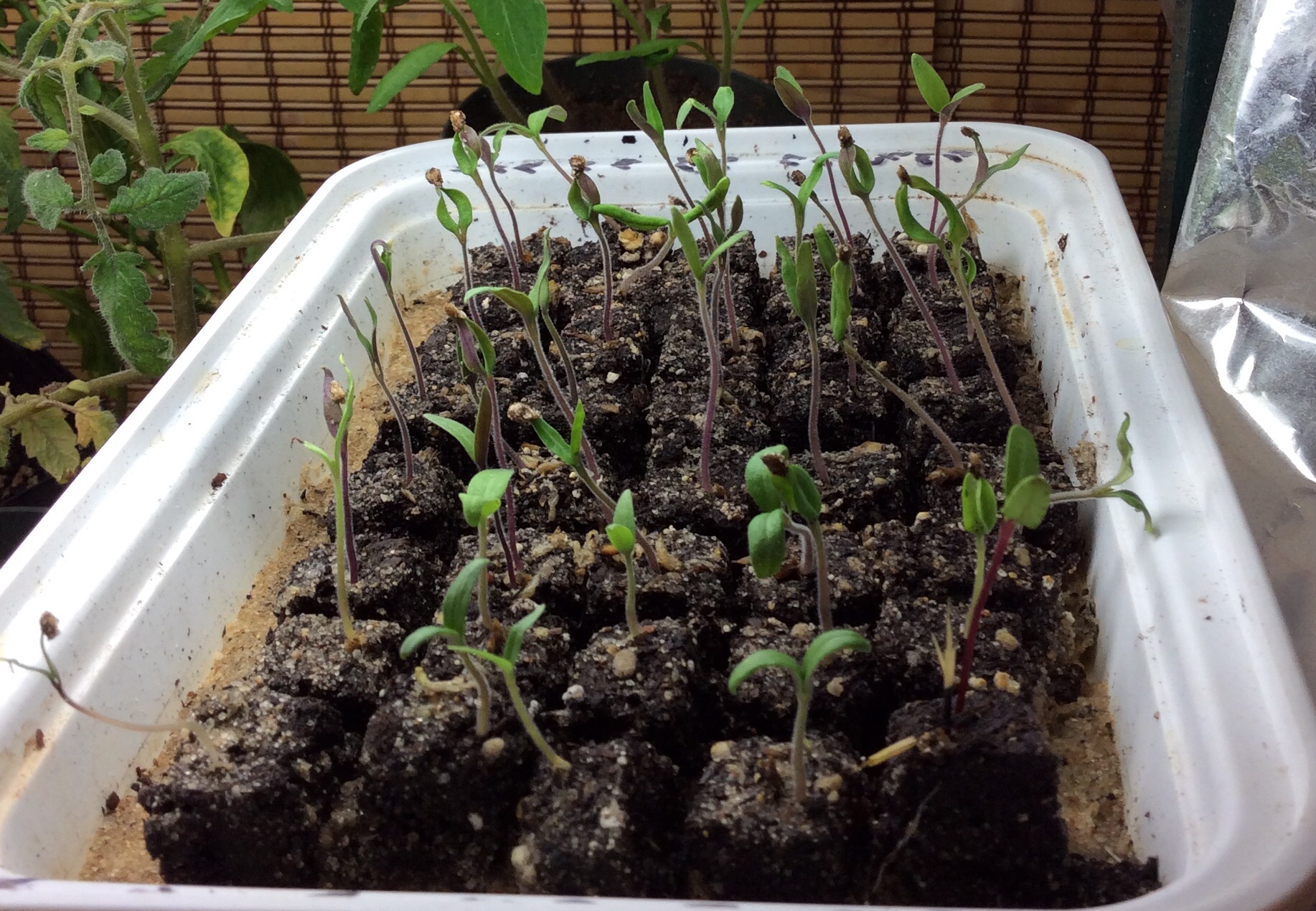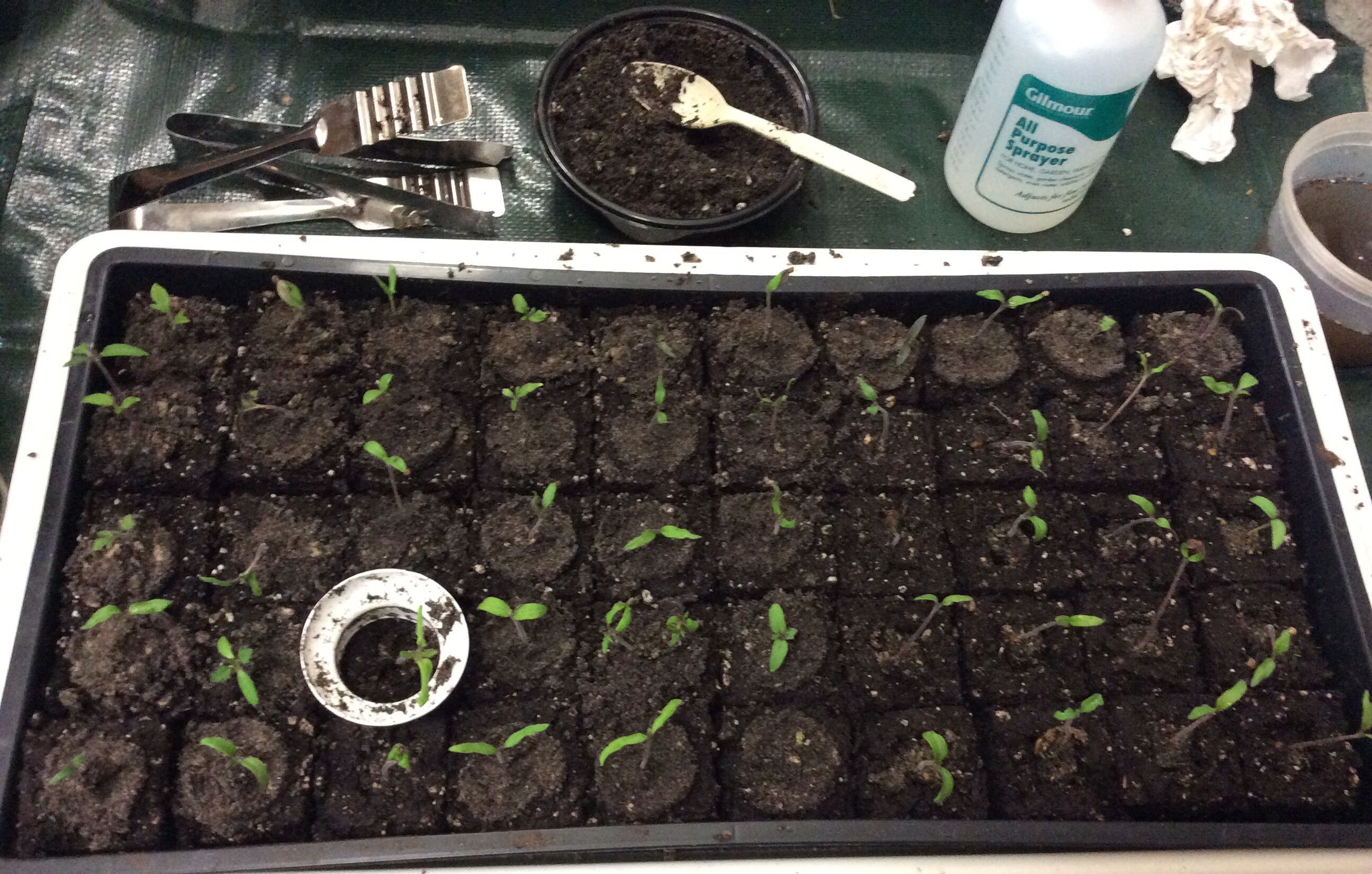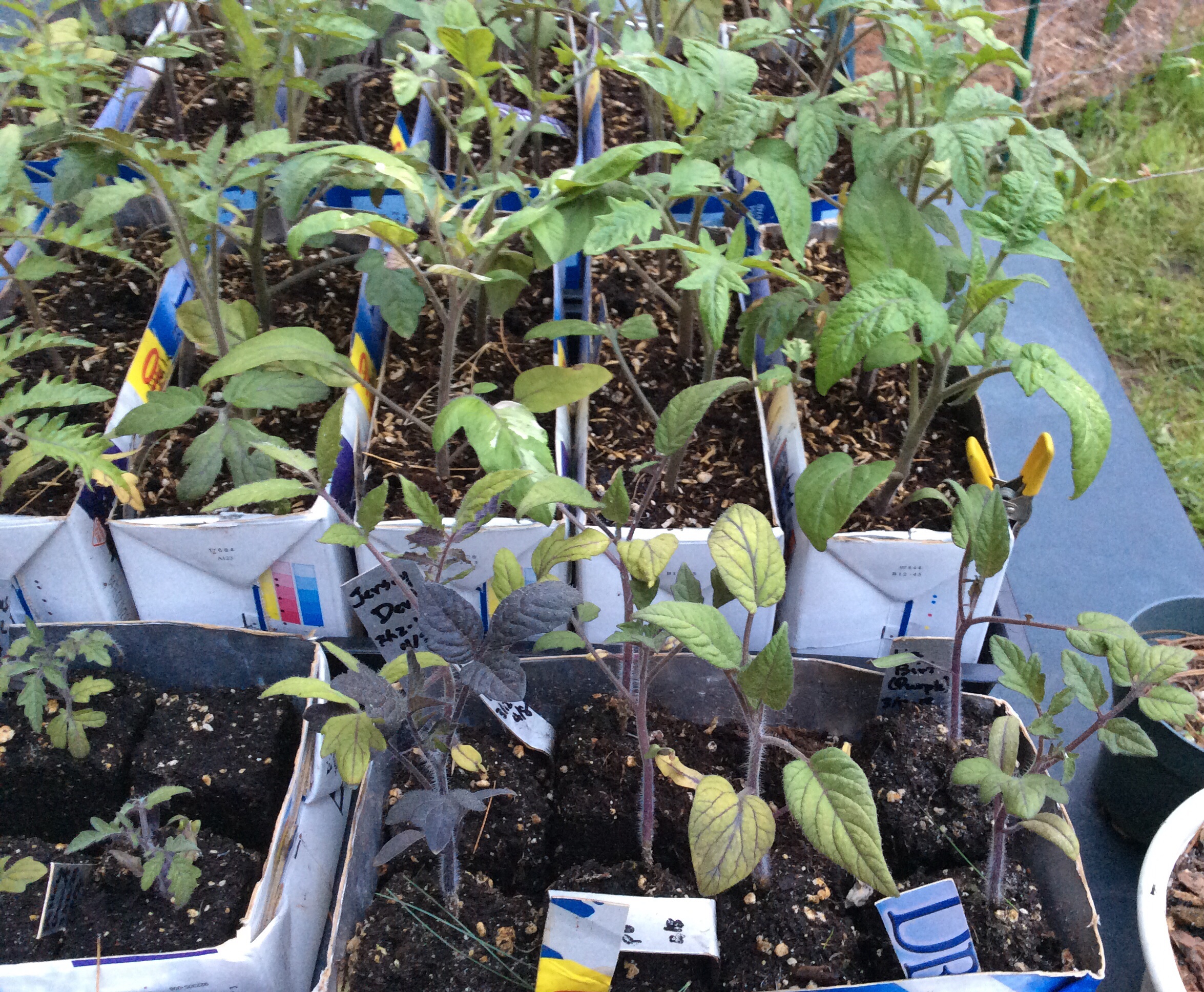This is from last year's seed starting thread:
Subject: I started some too
This was my seed starting thread this year:
Subject: Finally! Off to a haphazard start for the 2014 season
OK, so here are some things I noticed from using the soil blocks:
1) saves tremendous amounts of space, especially when heating pad is needed. Micros can go two sets per rectangular plastic Chinese take out -- that's 40 microblocks, lid upside down on and STACKABLE. One set in small aluminum (also Chinese take out). Many clamshell plastic -- sandwich containers, etc.
2) NOT finding the micros suitable for hard to germinate seeds. About 7-10 days max. Tomatoes are usually perfect (also brassicas, basil, marigold, etc.) With right amount of constant heat, most tomato seeds will germinate in 4-8 days. Micros have too small mass -- difficult to maintain correct moisture and temperature levels for long germination period like unheated tomato or even heated peppers, making them susceptible to fungal and fungus gnat issues.
3) microblocks really need covers but the covers should come off as soon as sprouted -- easiest to MOVE the blocks to growing tray -- this allows for relatively uniform sized seedlings in each tray.

4) Correctly sized tongs and spatula/paint scrapers for each size blocks are essential and makes all the difference in frustration factor, etc.
5) You really want to upblock from micro to mini quickly. Tomatoes will grow for quite a while in the micros and stay looking pretty healthy, but in reality they deplete resources in own block and start stealing from each other. Large outbreak of helmet heads if sprouted blocks are not moved out to separate growing trays.
(Microblocks are upblocked to miniblocks -- 50 mini blocks to a standard 1020 mesh tray)

6) a layer of sand in the bottom of growing trays improves growing conditions if not using bottom root pruning with mesh.
7) Love, LOVE re-using 1qt rice dream containers. In addition to using them to hold 8 mini blocks as growing trays, this year's experiment to deep uppot them in rice dream containers standing on narrow edge worked perfectly (3 per box and 6 boxes fit exactly per standard 1020 mesh tray, maximizing soil volume for 18 seedlings)

8 ) One caveat with the micro soil blockers is the inability to deep uppot and bury the hypocotyl up to the seedleaves as for tomatoes (and most other seedlings). When space on the heating mat is not an issue (smaller number of seedlings or sufficient ambient temperature), sowing single seeds directly in the 2" mini block's cubic hole, then filling the hole as the seedling grows results in better tomato seedlings.


